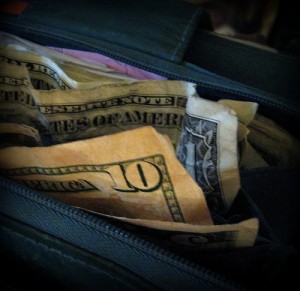 At the 2011 Minnesota Bicycle Summit, Bicycle Alliance of Minnesota staff member Nick Mason cited a study done next door in Wisconsin that suggested that if residents of Madison and Milwaukee replaced just 20% of trips under 2 miles currently taken by car with trips taken by bicycle or foot, the state would save $319 million dollars in health costs (BFW, Adventure Cycling).
At the 2011 Minnesota Bicycle Summit, Bicycle Alliance of Minnesota staff member Nick Mason cited a study done next door in Wisconsin that suggested that if residents of Madison and Milwaukee replaced just 20% of trips under 2 miles currently taken by car with trips taken by bicycle or foot, the state would save $319 million dollars in health costs (BFW, Adventure Cycling).
This plays into so much: Most Safe Routes to Schools programs focus on the kids who are within a mile of their school, and getting them cycling or walking is considered a way to help deal with the rise in obesity in young populations (17% of children are obese, per the Centers for Disease Control). But I think the thing I love most about this study is how quantifiable and reasonable it is. It looked at two metro areas — so, obviously, if it extended beyond such areas, the savings would be greater. And it only looks at a vehicle trip reduction of 20%! As I’ve stated before, a common red herring about bicycle advocates is that we are anti-car, and in general that’s not true.
I mean, I GET IT. I live less than a mile from a major source of food and home objects, but I recognize that a bicycle just isn’t going to work when I have to take a 13-week old infant and pick up a case of diapers, 2 gallons of milk, toilet paper, and a turkey. I know some people who could make it work, but in a broad sense it’s not a reasonable request. But that’s okay. The measured goal is based on cutting just 20% of trips, so the trip with the baby for milk and diapers can stay safely in the other 80%. Everyone still benefits via traffic calming, reduced CO2 emissions, and reduced congestion.
$300 million dollars buys a lot of engineering, encouragement and education for cycling. It just remains for local, state and federal leaders to try to seize it in a broader sense, rather than via piecemeal programs.

March 4, 2011 at 12:14 pm
I can’t see individual people replacing 20 percent of their car trips with bike trips. That would mean making a mode decision each time you go somewhere. It’s so much easier to just go with a default, and that probably means driving the car.
Perhaps it would work better to narrow the field and consider the kinds of trips that may work well for a particular person and suggest that (almost) all of that kind of trip be done on bike. So, for example, the default might be to bike to work (though one could still decide in any particular case to drive the car).